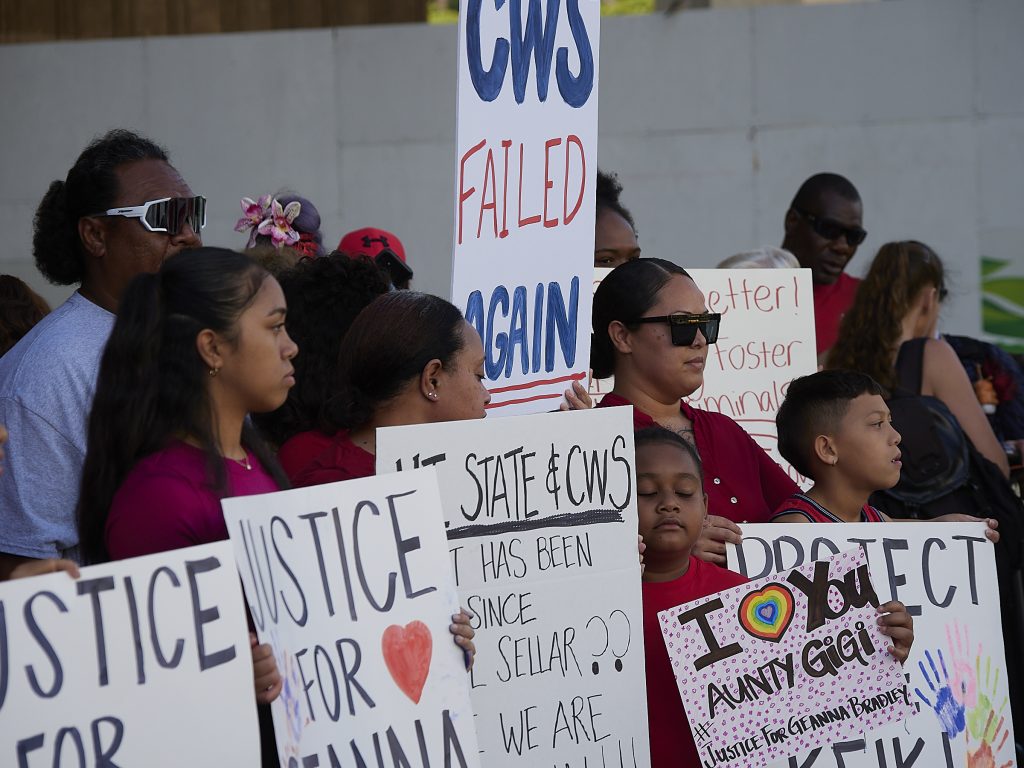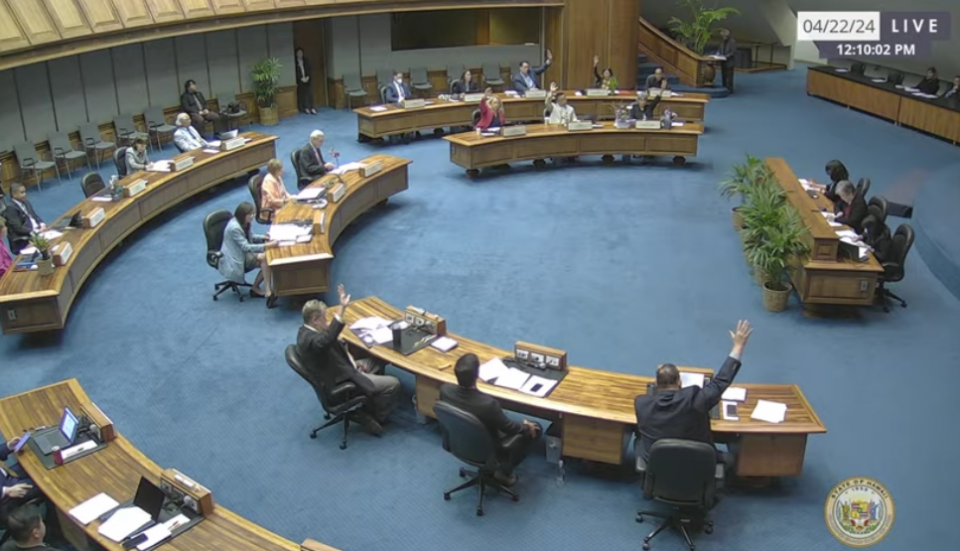The worst may be almost over.
Lt. Gov. Josh Green, a medical doctor who serves as Hawaii’s coronavirus preparedness coordinator, says the acute COVID-19 public health crisis could be over in less than three months, and that life may likely start getting back to normal for many residents by summer.
But business leaders say it’s going to be a longer haul for the economy. They expect the state’s economic woes to linger, as many businesses expect to struggle for well over a year.
Still, there seems general agreement that many social and recreational activities can probably resume in the spring, although with precautions.
“I think you can say the end is in sight,” he said.

What the end is, and what it will look like, isn’t simple. There are essentially three things going on: a public health crisis; a partial lockdown of social, recreational and business activities to mitigate the public health problems; and a broad economic downturn.
Green points to several metrics showing the public health crisis appears to be abating. It’s not just the daily case count, Green said, which had dropped to a seven-day average of 41 as of Friday, according to the Department of Public Health.
Another key number is the infection rate, which is now at 0.8%, and dropping. That means of every 8,000 people tested, fewer than 70 turn out to have the virus, he said. And he predicted the rate soon will be closer to 0.6%.
Finally, Green said, hospitalizations are dropping by about 50% every two weeks, to a point where he expects perhaps 20 hospitalizations in March, and something in the low double digits by May.
“That’s like not having a COVID crisis,” he said. “When you have 11 in the hospitals, I think you can say we don’t have a COVID crisis any longer.”
It’s not lost on Green that the state seemed to have control of the virus in May and June, during which there were some days with no new cases.
During the summer, several super-spreader events and dangerous activities – namely bars, house parties, illegal gambling joints and a few large funerals and prayer meetings – triggered an explosion of cases, Green said. The number of daily new cases climbed to more than 300 on some days, triggering another shutdown of Hawaii’s economy through restrictions on businesses and social activities.
But now we have vaccines, and that’s a big difference, Green says.
The virus simply won’t have as much chance to jump from person to person and run amok. He projects 350,000 people in Hawaii will have at least started getting vaccines by March 1; 600,000 by April 1; 850,000 by May 1 and more than 1 million by June 1. And as more people get vaccinated, the virus will have fewer available hosts to infect.
“The difference is after this lull we might have 700,000 vaccinations given,” he said. “Whatever happens next will be different from August when it went haywire.”

Further mitigating risk of a renewed surge, Green expects better old-school measures. During the August surge, for example, it became clear Gov. David Ige’s administration had not set up a robust contact tracing team that was a key part of the plan to identify cases and isolate cases to keep them from spreading.
Department of Health Director Bruce Anderson retired in the aftermath, State Epidemiologist Dr. Sarah Park was removed from her position and Green was given a more prominent position leading the state’s response. Green said he expects a better response this time.
‘We certainly should contact trace every single case and isolate them and test their family members,” he said. “You would think we would not make the same mistake twice.”
For the public, all this means social, recreational and commercial activities could open up sooner rather than later. Opening up activities, Green said, can be tied to reaching vaccination milestones.
Green thinks travel is a key activity that could see restrictions eased soon. He has proposed to Ige that people in the current vaccination Phase 1b that includes residents age 75 and older and others be free to travel interisland — no negative test required — two weeks after their second vaccination, which gives them time to develop immunity. That phase could be complete by March 1, Green said.
Vaccination Phase 1c, which includes people 65 years old and older, is expected to start in March, and when most of those people have gotten their full rounds of vaccines and waited two weeks, trans-Pacific travel without testing should open up for those who can show they have been vaccinated, Green is proposing. That could be mid-April to early May, he thinks.
Large gatherings could resume for people who have been vaccinated by May 1, as well, Green said, adding those kinds of restrictions should be imposed or lifted at the county level.
“Those kinds of decisions are up to the mayors,” he said, “and they’re built on an assumption that those events would be safe.”
By early May, he said, so many people in Hawaii will have been vaccinated that the risks of the disease spreading are low, especially if people continue using safeguards like masks. What’s more, by then the people most likely to get very sick from COVID-19 will have gotten shots.
“It marks the time when we’ve received very strong immune response for the state,” he said. “It’s not just a very large number of people have been vaccinated it’s that the most vulnerable people are vaccinated.”
“Go have a wedding,” he added. “Go have a crazy dance competition.”
Ige has not directly responded to Green’s travel proposal. However, the governor has included in an executive order a statement that the state will follow CDC guidance concerning vaccinations and travel.
In addition, Ige’s order includes amended rules letting Hawaii’s emergency management chief, Gen. Ken Hara, pull the trigger on a new travel program when the time is right.

In the meantime, if the numbers continue to stay low, Oahu is poised to open a bit more. The COVID-19 policies of the state’s most populous island are governed by a tier system that determines what activities are allowed based on certain metrics. If the new case count and infection rate remains low, Oahu on Thursday can move from Tier 2 to the less restrictive Tier 3 under the plan.
That means occupancy restrictions will be lifted for some retailers, like grocery stores, which will be able to operate without limits on the number of customers. Same for car dealers.
But for many, changes will be incremental: arcades and gyms, for instance, will be able to operate at 50% capacity instead of 25%, and group exercise classes will be able to have 10 people instead of five.
This all provides some good news for businesses, but the path forward for many appears difficult, with an economic recovery extending beyond the end of the public health crisis.
According to the Chamber of Commerce Hawaii, local businesses face significant challenges. The organization’s president and chief executive said the impact has extended far beyond the tourism industry, which was hardest hit, into sectors that indirectly support tourism businesses.
“The whole vaccination program provides a glimmer of hope for businesses, knowing that as more people get vaccinated we will be put on a path of economic recovery,” said Sherry Menor-McNamara, president and chief executive of the Chamber of Commerce Hawaii. “But it will take some time. It’s not going to take a couple of months.”
Menor-McNamara pointed to a recent survey of chamber members conducted by the research firm Omnitrak.
The survey was sent to more than 2,000 members between December and January, and received a response from a diversity of businesses. Of the 309 responses received, 73% came from Oahu businesses and 27% on neighbor islands; 38% had annual revenues less than $500,000, 41% $500,000 to $3 million, and 21% greater than $3 million.
The survey found more than two thirds of respondents are facing severe revenue losses, with an overall average decline of 45% from 2019 to 2020. This caused nearly half — 45% — to cut jobs. It would have been much worse but for the Small Business Administration’s Paycheck Protection Program, the survey found. Some 18% said they got PPP money, which prevented layoffs.
And the time frame for businesses getting back on their feet?
“When we asked how long it would take to recover economically, the average was 16 months, some longer than others,” Menor-McNamara said.

Sumner La Croix, a professor emeritus of economics at the University of Hawaii Manoa, said Hawaii’s economic pain overall has not been as great as it could have been because of federal stimulus money.
The state’s gross domestic product, a measure of goods and services produced, has been battered by the decline of tourism, he said.
But overall, income has not been down as much as it might have seemed, because of one-time $1,200 stimulus checks and an extra $600 per week federal “plus-up” for unemployed workers, which lasted into the summer.
The critical issue for the economic recovery is tourism, he said.
“It’s very possible we’ll see a very large rebound of tourism by the end of the summer, and if that happens it will solve an endless number of problems,” he said. That includes generating jobs and state tax revenue.
Still, he said how strongly international tourism rebounds is far from clear. Japan hasn’t started rolling out vaccines, and how quickly it can vaccinate the population could have a big impact on a key market for Hawaii, La Croix said.
“It’s hard to know when Japanese tourism is going to start up again,” he said.
Another wild card, La Croix said, is the COVID-19 variants and how well vaccinations will protect people from them.
Peter Ho, chairman, president and chief executive of Bank of Hawaii, also is keeping an eye on the impact of the variants, a big unknown.
“The trend in the health situation is improving clearly, and I would also say that the outlook is quite positive,” said Ho, who co-chairs the Hawaii House’s COVID-19 committee. “But one thing this stupid virus has taught us is humility. It’s still a day to day thing.”
Ho agreed with the chamber’s finding about the economy.
“There’s no getting around it’s going to take us a while to get out of this,” he said.
 Sign up for our FREE morning newsletter and face each day more informed.
Sign up for our FREE morning newsletter and face each day more informed.
Civil Beat is a small nonprofit newsroom that provides free content with no paywall. That means readership growth alone can’t sustain our journalism.
The truth is that less than 1% of our monthly readers are financial supporters. To remain a viable business model for local news, we need a higher percentage of readers-turned-donors.





